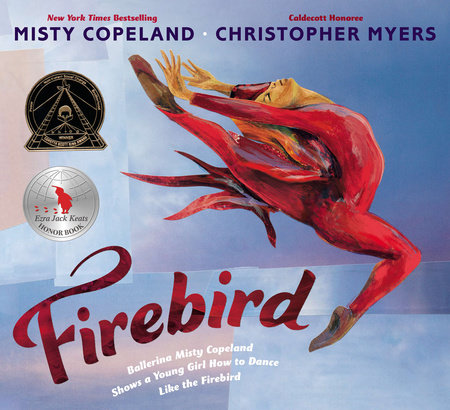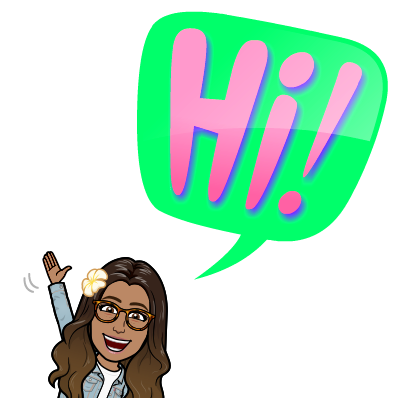5360 Literature for Children
June 5, 2020
Annotated Bibliography Assignment - List 2: Coretta Scott King

myth. Mt. Airy, MD: Sights Productions.
The legend of Yoruba has it that the creation of life was made by Obatala who was a messenger of Olorun, a supreme deity in and over the universe. Obatala was the only curious Orisha messenger who wasn’t happy with his surroundings. He ventured off and asked Obatala for permission to create land under the mist and on top of the water in a world never reached. After descending on a gold chain for seven days to get to the water, Obatala created land from sand he’d gotten from the sky kingdom. Once land was created, he began to create people from clay in all shapes and sizes. Obatala wished the clay had life. Because of this, he breathed the winds down from the sky which spun the Earth and gave life to everything. The Yoruba African peoples believe this is how life began on Earth.
Winner of the 1993 Coretta Scott King Award for illustrations, this book is a retelling of an African creation myth. Based on African Yoruba legends, this colorful story gives cultural experiences to young readers ages 6 and up. The book demonstrates sensitivity to current issues of society today, such as gender, multiculturalism, and handicap abilities with the appreciation shown for all kinds of people.
If you enjoy this book you might also like, Looking for Lord Ganesh by Mahtab Narsimhan.

Bauer, M. D., & Holmes, E. (2018). The stuff of stars. Somerville, MA: Candlewick Press.
From nothingness to everything! All the stars caught fire and exploded moving dust everywhere. As a result, this formed planets. Even life found on planets arose. In an instant, life spread across all the galaxy, and from those particles that brought life, so did each one of us. The symbolism between life and the stars draw readers in to make great connections.
The Stuff of Stars won the Coretta Scott King Award in 2019 for it’s use of color and illustrations. It showcases the creation of the universe and all that's associated within it.
If you enjoy this book you might also like, Older Than the Stars by Karen C. Fox.

Bryan, A. (2016). Freedom over me : Eleven slaves, their lives and dreams brought to life.
New York: Atheneum Books for Young Readers.
This tells of 11 slaves who were brought to America and enslaved to the Fairchilds’ Estate. Each slave was prepped for a different trade in order to bring profit to the Fairchilds. Iron work, picking cotton, sewing clothes, basketry, gardening, harvesting, and cleaning were only some of the jobs these enslaved people endured. You read about their simple descriptors of their slave life, but also about the beauty of their lives they live in secret. You learn each of their personal dreams outside of slavery which leaves you reading through the lives of an inspiring, hopeful group of people.
The author is a three time Coretta Scott King Award recipient. This historical fiction book was inspired by documents from the 1820’s and is created for ages 6 and up. Bryan’s free verse poetry in storytelling that translates into an understandable picture book makes it simple to comprehend such a multifaceted subject in history. A nice detail Bryan gives in his book are photos of the documents he researched for the story.
If you enjoy this book you might also like, Freedom in Congo Square by Carole Boston Weatherford.

Bryan, A. (2007). Let it shine: Three favorite spirituals. New York, NY: Atheneum Books for Young Readers.
This book is a collection of 3 spirituals told with boldly colored illustrations. The illustrations are done in the style of paper like cut outs that add breath to the lyrics on the pages. These colors present memorable images that help show the important messages of songs like, 'He's Got the Whole World in His Hands." Even families that have various religions backgrounds can appreciate the images and meanings embedded. This book helps to make connections and bridge cultural gaps.
If you enjoyed the illustrations in this book, you might also like Cinderella: A Cut Paper Book by Sarah Dennis

Copeland, M., & Myers, C. (2014). Firebird. New York, NY: G.P. Putnam’s Sons.
This story details a young girl who doubts her ability to rise to the the level of perfection tht she sees Copeland perform. The absence of grammar is present in order to allow the words a sense of freedom to "perform" on the page. This is an inspiration book that will cater to both boys and girls who are doubting their ability to associate with the performing arts.
If you liked this book, you might also consider reading Lili at the Ballet by Rachel Isadora.

Curtis, G., & Lewis, E. B. (1998). The bat boy & his violin. New York, NY: Simon & Schuster Books for Young Readers.
In this story, Reginald loves to play the violin, to his father’s dismay. Dad would rather that his son play baseball, so he has Reginald act as bat boy for the Dukes, (the team he manages in the Negro National League.) After some failures, Reginald’s father has him play the violin and stop helping. As a result, doing what he’s best at turns out to be a bigger help than his bat boy skills when the poorest team in the league starts winning games thanks to his music. Through Reginald’s story, readers will see the worth of being true to self and your own talents, but they will also learn we should value what makes people special rather than trying to change them into what we see fit. This serves as a lesson that is just as valuable for parents as it is their child.
Here is another text about discovering one's worth that you might want to check out - Flight School by Lita Judge.

Hill, L. C., & Collier, B. (2010). Dave the potter: Artist, poet, slave. New York, NY: Little, Brown and Company.
In this book Dave was a slave who learned to work clay into art regardless of his unfortunate placement. He learned to create a life that has exceeded the hold that forced him into slavery. The language of the story takes readers along the process of making a pot where they see how it is crafted from a mound of wet clay and then fired and coated with a glaze. Dave’s pottery is much more than that - just like his character. The reader is shown how his pottery was more than just clay vases for flowers. They were his way of showing what his hands were capable of bringing into this world.
Dave was a real person, and his pottery still exists today. Readers might also enjoy reading Henry's Freedom Box by Ellen Levine.

McKissack, P. C., & Pinkney, J. (2001). Goin’ someplace special. New York, NY: Atheneum Books for Young Readers.
In this book, 'Tricia is determined to head to her special place regardless of the Jim Crowe signs and the nasty stares and words she meets throughout the story. Unfortunately, it all starts to become too much to face on her own without the support of her grandmother until she runs into a wise woman named Blooming Mary. Blooming Mary points out that her grandmother is with her, and ‘Tricia Ann gains the motivation to continue on her journey because the destination is worth the trials.
Author McKissack tells the story of her own special place that had no Jim Crowe signs but, instead, a sign boldly stating above the door that all are welcome, and Patricia McKissack builds the reader's excitement and longing for this special place with an array of occurrences that will help all readers appreciate the depths of segregation and the value of a safe place. Jerry Pinkney shows the emotions of the story directly to the hearts of the readers with his expressive water colors.
If you enjoyed Pinkney's illustrations, you might also want to try Minty: A Story of Young Harriet Tubman by Alan Schroeder.

Mitchell, M. K., & Ransome, J. (1993). Uncle jed’s barbershop. New York, NY: Simon & Schuster Books for Young Readers.
Uncle Jedediah had always wanted to open his own barbershop in the early 1900s. He'd travel around the county cutting hair and saving his money to open his own barbershop. Tragedy strikes Uncle Jed and his family twice over. He takes a huge plunge into his savings to help pay for a beloved family member’s care. Aside from this, The Great Depression takes all of his savings when he almost had enough to achieve his dream. These are setbacks and disappointments for sure but no match for Uncle Jed’s unbreakable spirit.
One of the strongest points of Mitchell’s story is what it has to say about dreams. Even though dreams can be stumped by life's obstacle, it's important to push through. Alongside this theme, comes the idea of being selfless and offering all aspects of yourself to help someone else in a time of need.
For more books about following your dreams, you might want to read Mae Among the Stars by Roda Ahmed.

Steptoe, J. (1987). Mufaro’s beautiful daughters: An African tale. New York, NY: Lothrop, Lee & Shepard.
Mufaro has two beautiful daughters: Nyasha is kind and brave. Manyara is clever and mean and constantly treats her sister horribly and exclaims that her “silly kindness is only weakness.” However, we know that kindness is never weakness, and Manyara discovers this for herself when the king declares that he is looking for a worthy woman to make his wife and leaves the village to encounter a series of magical tests that prove it to her.
Mufaro’s Beautiful Daughters has some semblance to the classic Cinderella. There is one daughter that is generous and fair and one who is cruel and selfish. In this story, we have a magical king who tests the wicked sister and lays out all of her faults instead of a fairy godmother who assists the kind sister. With the combination of Manyara's wretched character traits and her gloriously illustrated sneering face compared with Nyasha’s kind acts and serenity, readers will easily understand the moral that kindness is not weakness.
Another African folktale that you might like to try is The Name of the Tree: A Bantu Tale Retold by Celia Barker Littridge.




No comments:
Post a Comment